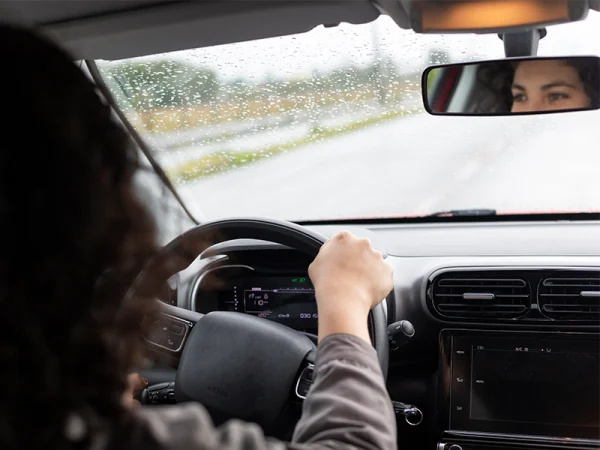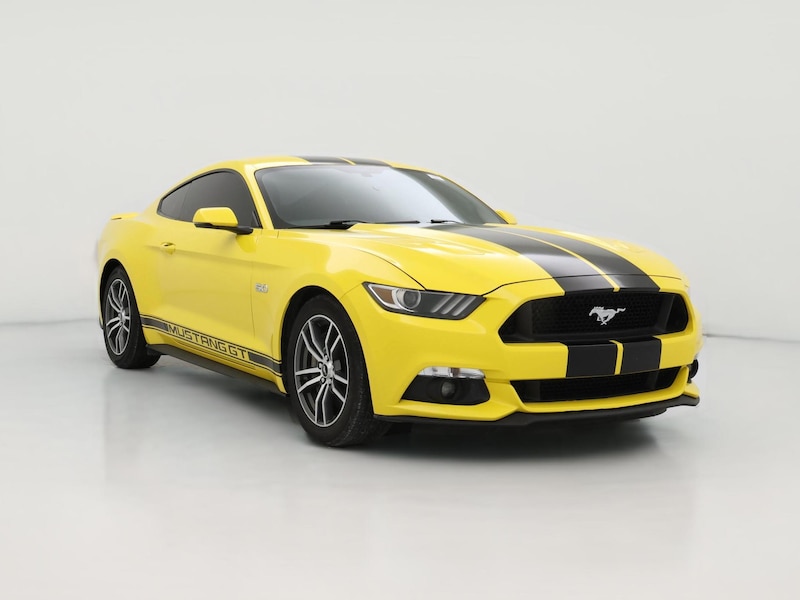2020 Tesla Model Y review
Tesla Model Y highlights
Customer rating
RepairPal reliability rating
(data not available)
Pros
- Good performance and range with both models
- Lots of passenger room, front and rear
Cons
- No Apple CarPlay® or Android Auto™ integration
- Performance model has a stiff suspension
Battery range (EPA estimate)
315 miles
Pricing for current inventory
(no current inventory)
Shop with your budget in mind
Getting pre-qualified lets you shop with personalized monthly payments, and it doesn't impact your credit score.
2020 Tesla Model Y makes a splashy debut as an all-electric small luxury SUV
Given the huge sales of compact luxury SUVs, it's a bit of a surprise it took Tesla until 2020 to bring one to market. It has, though, and like the rest of the Tesla range the Model Y is completely battery-powered. Based on Tesla's Model 3 sedan, the Model Y—like all Teslas—does things a little bit differently, with all but a few controls clustered in a sizable 15-inch touchscreen. It works well with some practice, but the lack of Apple CarPlay® or Android Auto™ smartphone integration is inconvenient.
Tesla offers the 2020 Model Y in Long Range and Performance trim levels, both of which feature all-wheel drive. With either choice, performance is impressive: The Long Range can sprint to 60 mph in 4.8 seconds, and the Performance model is even quicker at 3.5 seconds. The EPA-estimated range for both trims is 300-plus miles, and the Tesla Supercharger network is available for rapid charging when you're out and about. Space is excellent for both passengers and luggage, and forward visibility is good. Visibility to the rear is less so because of the slim, high rear window. It's an impressive debut for the Model Y, with all the usual Tesla hallmarks of high technology, performance, and charging convenience.
All Tesla Model Y years
Not sure what year to select? Learn about each Tesla Model Y generation from 2020 to 2026
2020 Tesla Model Y trims
Curious how Tesla Model Y trims differ? Use our side-by-side vehicle comparison to see the differences and similaritiesLong Range:
Includes an EPA-estimated range of 316 miles on a full charge, 19-inch wheels, power-adjustable front seats with heating, a panoramic glass roof, driver aids, and more.
Performance:
Adds an upgraded powertrain good for a zero to 60 mph time of 3.5 seconds (according to the manufacturer, when new) and an EPA-estimated range of 315 miles on a full charge.
Tesla Model Y photos
1. No range anxiety
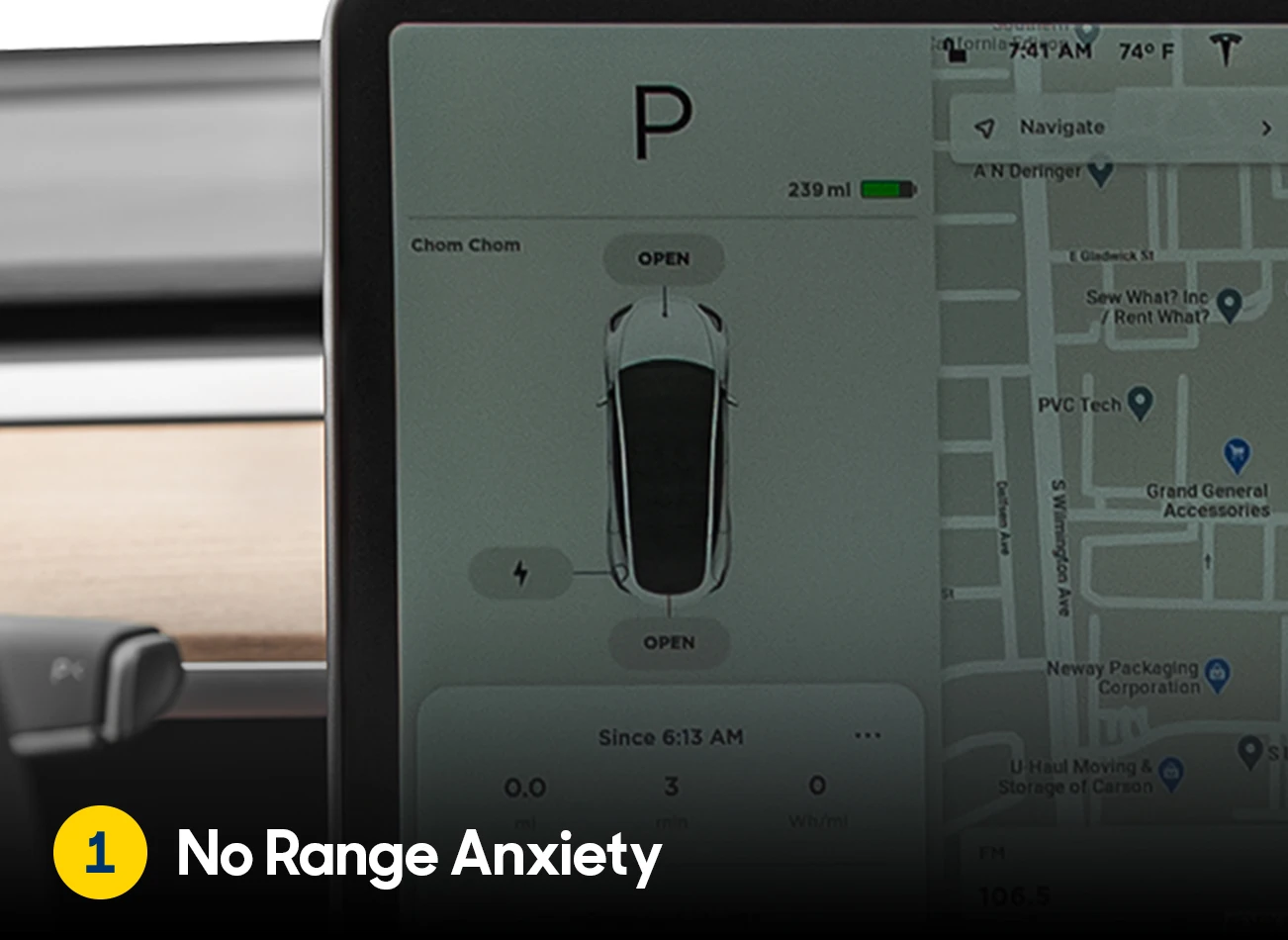
One of the things you may hear about electric cars is "range anxiety," but modern electric car batteries are large enough to get you pretty much wherever you need to go. With an EPA-estimated range of 315 miles on the Performance trim with a full charge, the 2020 Tesla Model Y can travel just about as far as many gas-powered cars can go on a single tank.
Plus, the EV charging network is growing by the day, so it's getting even easier to find a convenient charging spot for your next electric road trip.2. AWD capacity
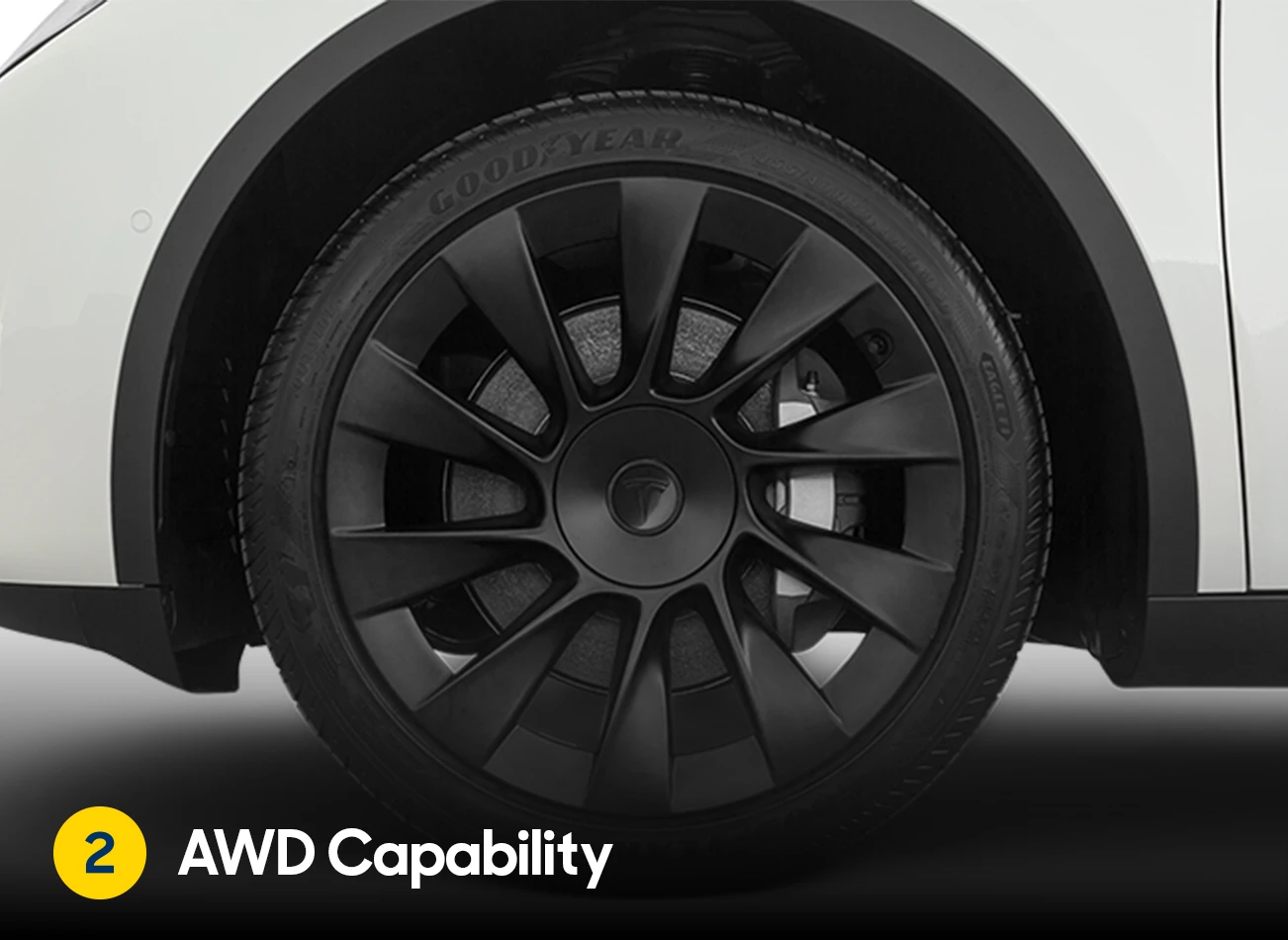
Both 2020 Model Y trim levels feature optional all-wheel drive, so your vehicle can be ready for whatever Mother Nature sends it way. Powered by super-responsive, independent electric motors, the Model Y is designed to instantly control torque to the front and rear wheels. That can mean better handling, traction, and stability control, regardless of the scenario.
3. The latest tech
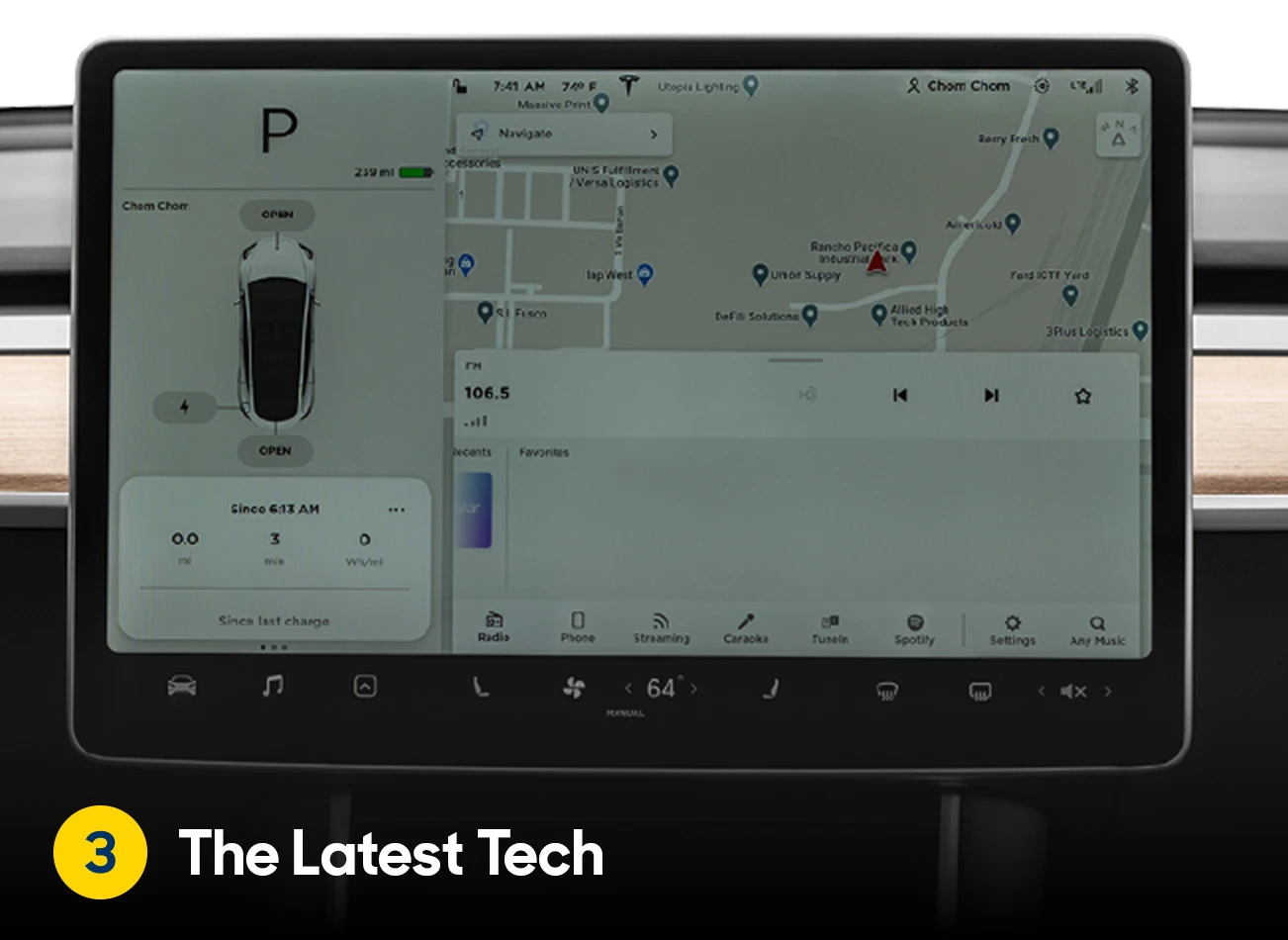
Like all Tesla models, the Model Y's interior centerpiece is a massive 15-inch screen. It goes beyond infotainment though, as the screen controls just about every function in the vehicle. With crisp resolution and an integrated navigation system, the Model Y has various gadgets you may want. You might even find some "Easter eggs," or fun little hidden surprises mixed in. There's even a mode to keep your pet warm or cool while they're in the car alone!
4. Plenty of speed
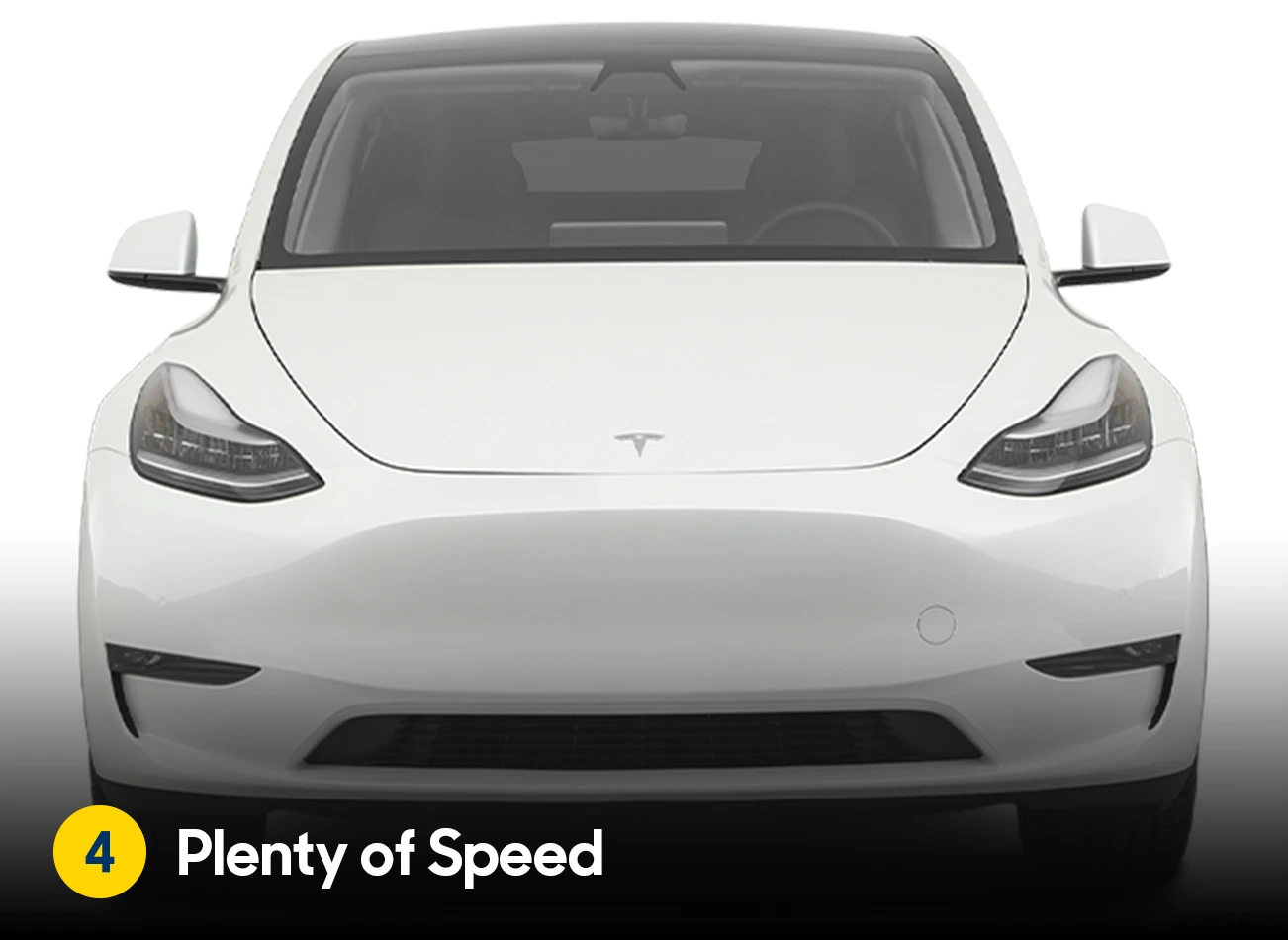
The average car enthusiast may fear the day when big V8 engines will no longer be available. However, that doesn't mean our electric future will be dull. Far from it — the 2020 Model Y is fast. On the Performance trim, the Model Y can go from zero to 60 mph in 3.5 seconds, boasting a top speed of 150 mph (according to the manufacturer, when new). Clearly, the Model Y is far from boring. You can even shop for a model with lower suspension in the Performance trim for better handling.
5. Lots of space
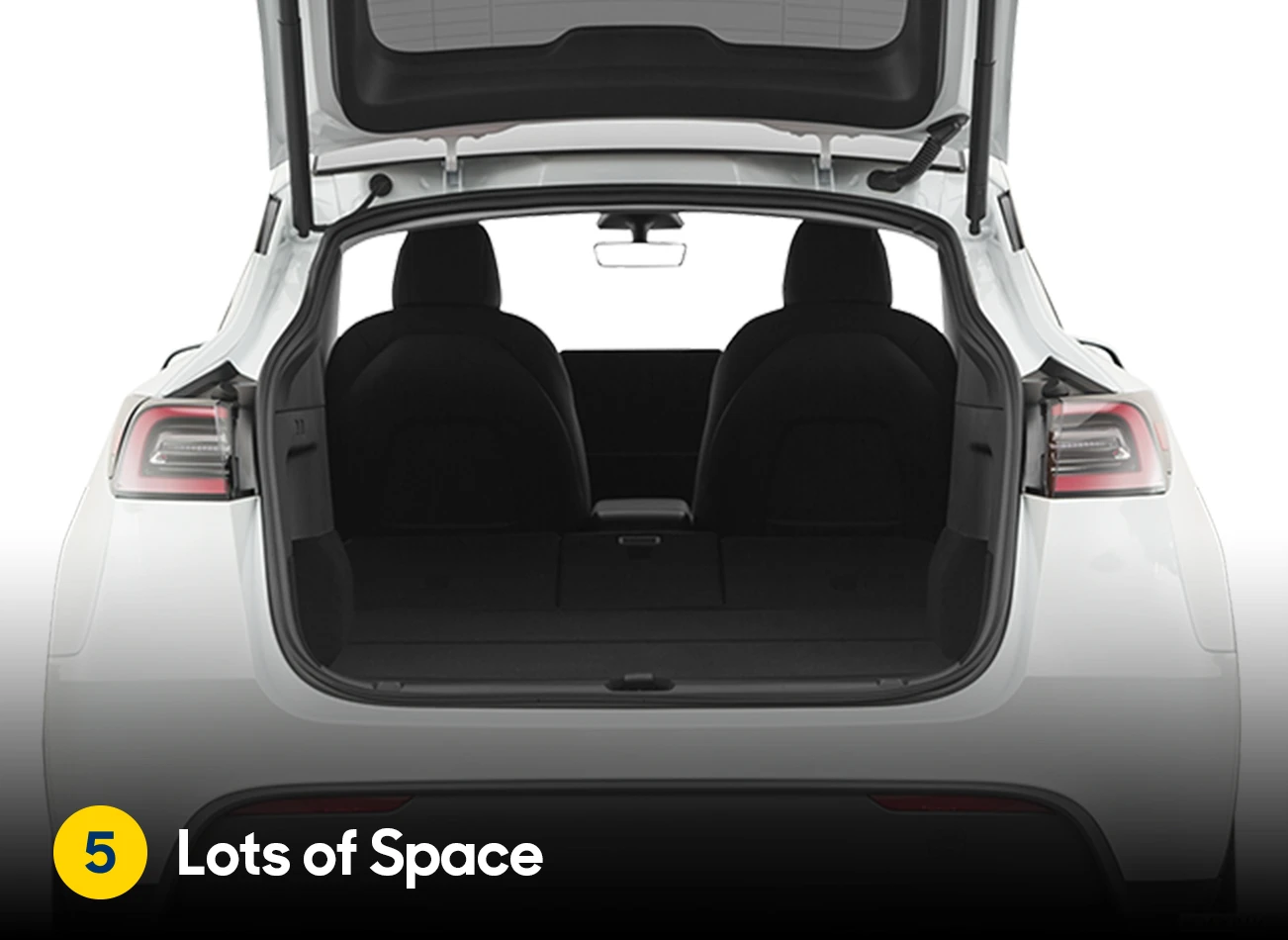
The 2020 Model Y's cargo space is quite large: 68 cu ft with the rear seats folded. The number of storage options is significant, including additional storage under the rear cargo area, plus the front trunk ("frunk"). That means you can have plenty of room for your stuff on your all-electric road trip.
2020 Tesla Model Y video review
The Tesla Model Y is an all-electric luxury SUV that made waves when it was released in 2020. Smaller and less expensive than the Model X, the Model Y is now one of the most popular electric SUVs. In this video, Travis Langness from Edmunds explains everything you should know about the Tesla Model Y and what you should expect if you're considering buying one. This is our review of the Tesla Model Y.
Similar vehicles
If you're interested in the 2020 Tesla Model Y, you should also check out these similar vehicles from Previous generation years.
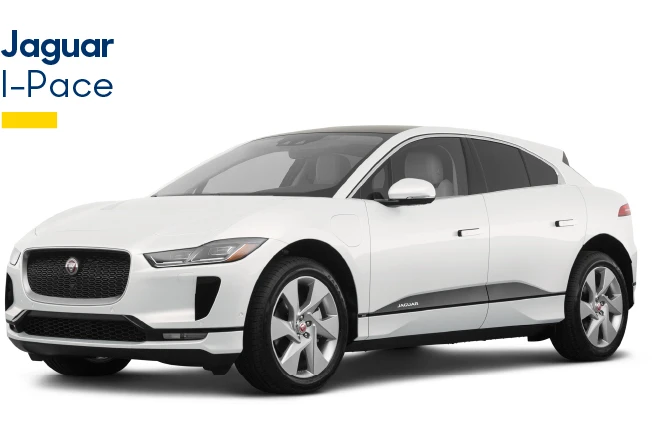
The Jaguar I-Pace made its debut in 2019 as a quick and quiet SUV with impressive range. 2019-2020 models use two electric motors and a lithium-ion battery that delivers an EPA-estimated range of 234 miles on a full charge.
Standard features on the 2019-2020 Jaguar I-Pace S include:
LED headlights
Eight-way semi-powered front seats
Meridian™ sound system
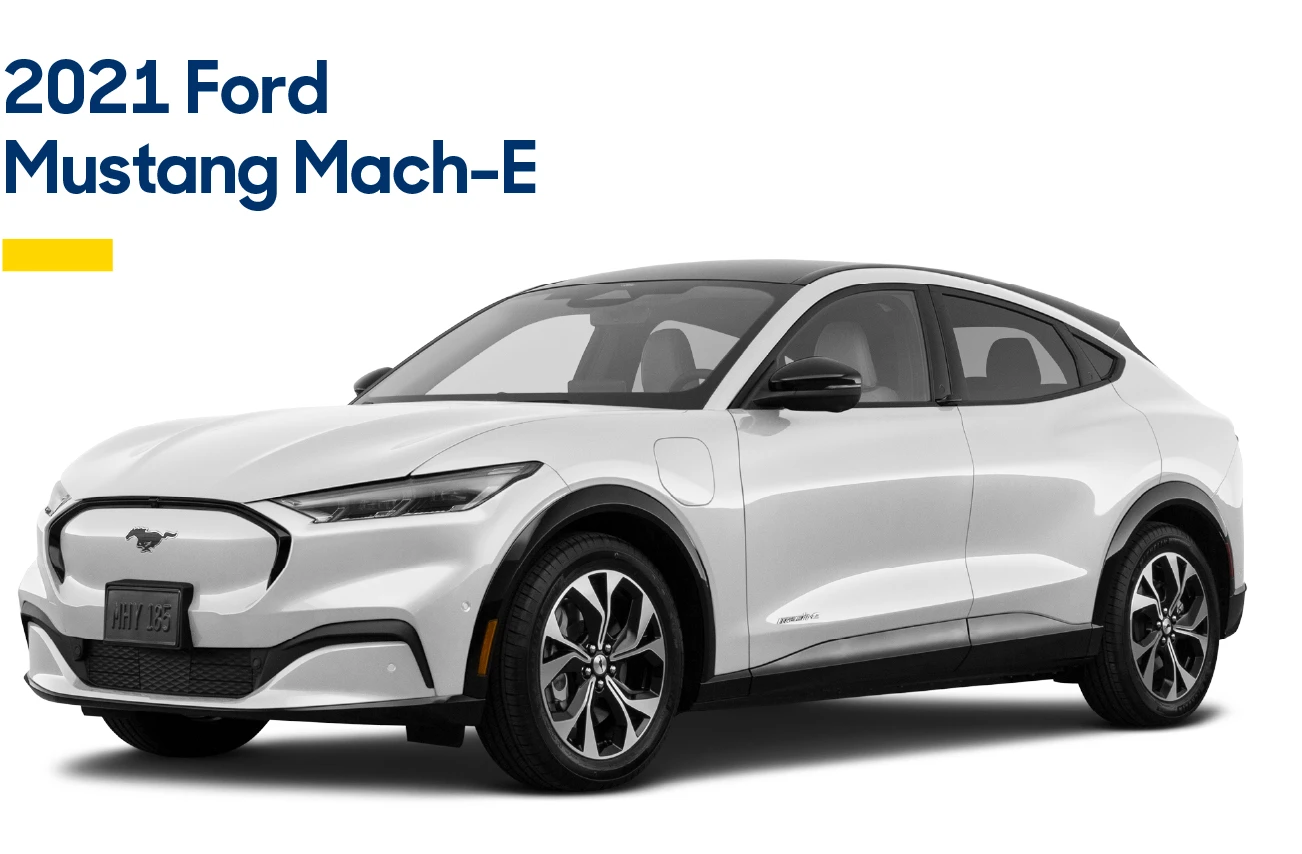
New for 2021, the Mustang Mach-E is Ford's first electric-only model. This five-seat luxury SUV is available in five trims and many powertrain options. The base Select model offers standard rear-wheel drive, an EPA-estimated range of 230 miles on a full charge, 266 hp, and 317 lb-ft of torque.
The Premium trim with rear-wheel drive and an extended-range battery gets an EPA-estimated range of 300 miles on a full charge.The 2021 Ford Mustang Mach-E has these standard features:
Over-the-air software updates
15.5-inch central touchscreen
10.2-inch driver information display
Navigation system
29 cu ft of storage space behind the rear seats
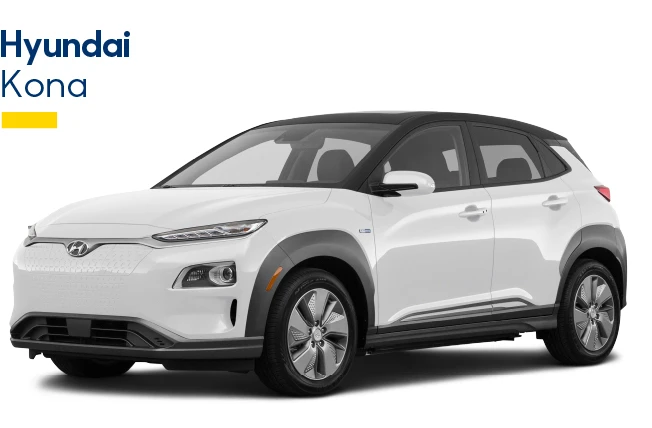
A front-runner option if you're shopping electric, the 2019-2021 Hyundai Kona Electric SUV is powered by a 201-hp electric motor, delivering front-wheel drive via a single-speed automatic transmission. When new, a fully charged 2019-2021 Kona Electric has an EPA-estimated range of 258 miles.
Seating five passengers and accommodating up to 19.2 cubic feet of cargo space behind the rear seats, this is a sensible all-electric choice.Standard features on the 2019-2021 Hyundai Kona Electric SEL base trim include:
Rearview camera
Apple CarPlay® and Android Auto™ functionality
Keyless entry
Shop with your budget in mind
Getting pre-qualified lets you shop with personalized monthly payments, and it doesn't impact your credit score.
Ratings & reliability
Tesla Model Y features and specs
Curious how Tesla Model Y trims differ? Use our side-by-side vehicle comparison to see the differences and similarities
Long Range 4WD/AWD 4D Sport Utility
Standard Features
- 4WD/AWD
- ABS Brakes
- Air Conditioning
- Alloy Wheels
- AM/FM Stereo
- Automated Cruise Control
- Automatic Transmission
- Auxiliary Audio Input
- Blind Spot Monitor
- Bluetooth Technology
- Front Seat Heaters
- Heated Mirrors
- Lane Departure Warning
- Leatherette Seats
- Memory Seat(s)
- Navigation System
- Overhead Airbags
- Parking Sensors
- Power Hatch/Deck Lid
- Power Locks
- Power Mirrors
- Power Seat(s)
- Power Windows
- Rear Defroster
- Rear Seat Heaters
- Rear View Camera
- Side Airbags
- Skylight(s)
- Smart Key
- Traction Control
- 20 Inch Plus Wheels
- Automated Parking
- Blind Spot Monitor
- Fold-Away Third Row
- Full Roof Rack
- Lane Departure Warning
- Leather Seats
- Satellite Radio Ready
- Skylight(s)
- Third Row Seat
- Tow Hitch
Drive Wheels
All Wheel (4WD/AWD)
Engine size
0.0L
Engine type
Electric
Wheelbase
113.8"
Overall length
187"
Width
75.6"
Height
63.9"
Leg room
F 41.8"/R 40.5"
Head room
F 41"/R 39.4"
Front tires
P255/45WR19
Rear tires
P255/45WR19
Seating capacity
5
Transmission
Automatic
2020 Tesla Model Y FAQ
Yes, the Model Y is considered an electric compact crossover utility vehicle (CUV).
No, the Model Y does not have cooled seats, but heated front and rear seats are optional.
The 2020 Model Y has a 6.6 inches of ground clearance.
The 2020 Tesla Model Y Dual Motor (Long Range AWD) has 384 hp. The 2020 Tesla Model Y Dual Motor (Performance AWD with Performance Upgrade) has 456 hp.
Yes, blind spot detection is standard on all 2020 Tesla Model Y trim levels.
Dog mode is a climate control feature that manages the car's air conditioning or heat systems when owners leave their pets in their Tesla. It even displays a note for passers-by that the pet is comfortably resting at a specific temperature.
More about the 2020 Tesla Model Y
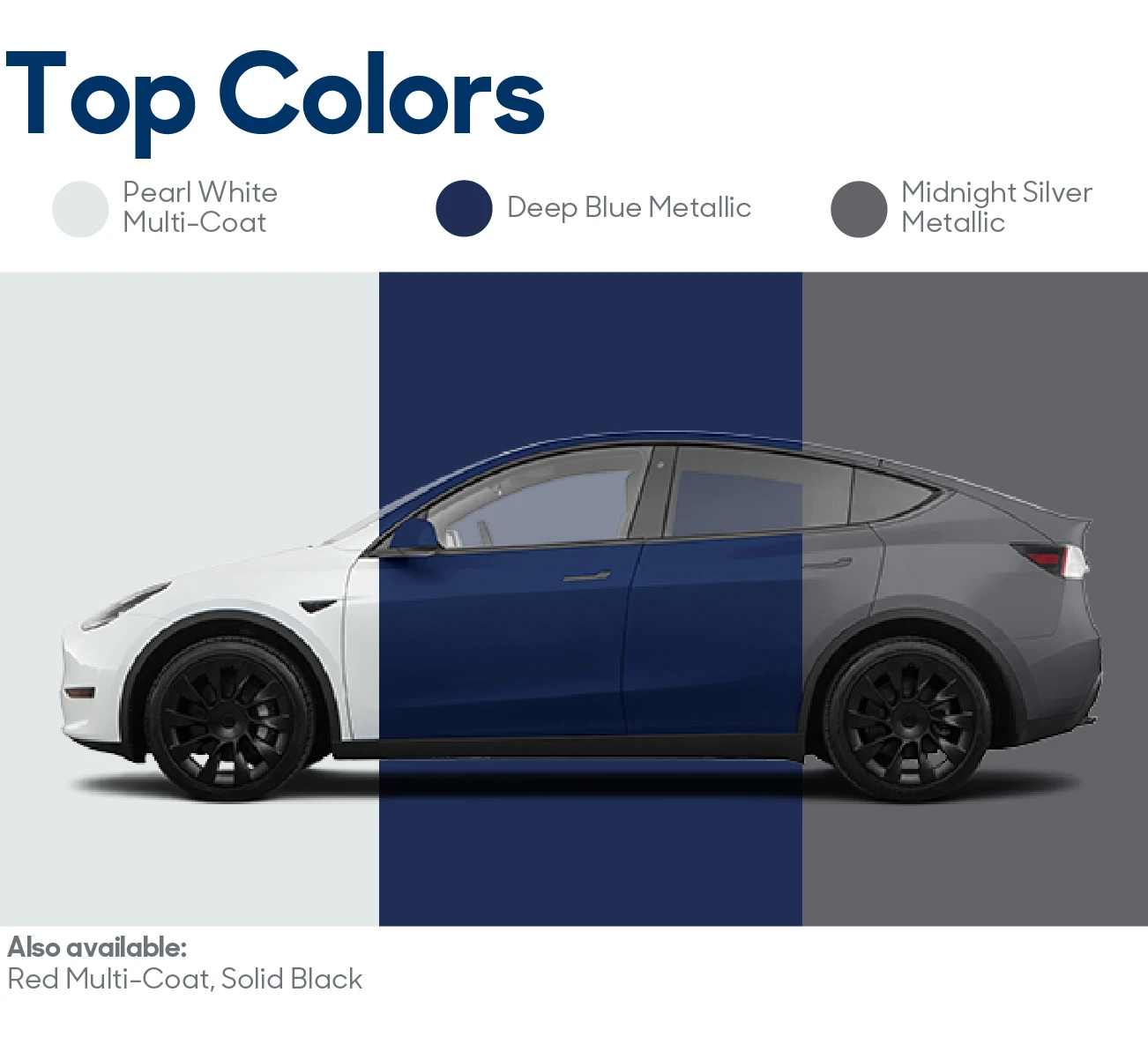
Exterior colors
Deep Blue Metallic
Midnight Silver Metallic
Pearl White Multi-Coat
Red Multi-Coat
Solid Black
Interior colors
Black w/Premium Seat Trim
White/Black w/Premium Seat Trim
Interior details
The 2020 Tesla Model Y seats up to five people across two rows of leatherette seating. While the rear seats don't fold entirely flat, the wide opening makes for easy loading. The removable cargo floor in the rear provides additional storage underneath, and the front trunk ("frunk") adds even more practicality. The Model Y boasts 68 cu ft of total cargo space with the seats folded down, and the large 15-inch touchscreen controls just about all vehicle functions.
Child seat details
The 2020 Tesla Model Y has three child seat tether anchors and can fit three child seats. There are no lower anchors for the middle seat. The IIHS rates the LATCH ease of use as "acceptable," which is its second-highest rating
Performance
The 2020 Tesla Model Y has a zero to 60 time of 4.8 seconds (Long Range) or 3.5 seconds (Performance), as well as a top speed of 130-150 mph (according to the manufacturer, when new). The Model Y in the Performance trim with AWD and 21-inch wheels gets an EPA-estimated 111 MPGe combined. Both the Performance trim (with 19-inch wheels) and the Long Range trim have an EPA-estimated 121 MPGe combined.
Emissions info
According to EPA estimates, the 2020 Tesla Model Y greenhouse gas emissions are 0 grams per mile. This estimate is based on a brand-new model. Visit fueleconomy.gov for more details.
NHTSA Safety Ratings
The 2020 Tesla Model Y received an overall 5/5 by the National Highway Traffic Safety Administration (NHTSA). Find out more about this rating and how NHTSA’s 5-Star Safety Ratings program evaluates the crash protection and rollover safety of new vehicles.
Keep in mind that certain vehicles may have unrepaired safety recalls. Click here to look up a specific vehicle.
Frontal Barrier Crash Rating Test: A head-on collision between two similar vehicles traveling at 35 mph.
Overall: 5/5
Side Barrier Crash Rating Test: A vehicle standing in an intersection sustains driver-side impact from a vehicle moving at 38.5 mph.
Overall: 5/5
Side Pole Crash Rating Test: A vehicle slides sideways at 20 mph and impacts a tree or telephone pole.
Overall: 5/5
Year comparisons
2020 to present (First Generation)
The Tesla Model Y is a compact electric crossover based on the Tesla Model 3 sedan, featuring a taller roofline and more interior space. Whether you shop for the Long Range or Performance trim, you'll find a great all-electric option in the Model Y. For the 2021 model year, the Model Y introduced a Standard Range trim with an EPA-estimated 244 mile range on a full charge, as well as an optional pop-up third-row jump seat that increases total seating capacity to seven.
Research other vehicles
- Used 2020 Tesla near me for sale
- Used 2020 Electric Tesla near me for sale
- Used 2020 Tesla Model 3 Performance near me for sale
- Used 2020 Tesla Model X Long Range near me for sale
- Used Tesla Model Y near me for sale
- Used 2020 Tesla Model Y near me for sale
- Used 2020 Electric Tesla Model Y near me for sale
- Used Tesla Model Y Long Range near me for sale
- Used 2020 Tesla Model Y Long Range near me for sale
- Used 2020 Tesla Sedans near me for sale
- 2016 Chevrolet Spark EV review
- 2017 Chevrolet SS review
- 2025 Chevrolet Suburban 1500 review
- 2020 Chevrolet Tahoe review
- 2021 Chevrolet Tahoe review
- 2022 Chevrolet Tahoe review
- All things EV
- 2014 Ford E-250 review
- 2014 Ford E-250 extended review
- 2012 Ford E-250 extended review
- 2012 Ford E-350 review
- 2025 Ford Mustang Mach-E review
- 2025 Genesis G70 review
- 2025 Genesis G80 review
- 2019 Genesis G80 review
- 2021 Genesis G80 review
- 2025 Genesis G90 review
- 2025 GMC Acadia review
- 2015 GMC Acadia review
- 2025 Hyundai Kona Electric review
- Used Tesla buying guide
- 2025 Tesla Model Y review
- 2021 Tesla Model Y review
- 2022 Tesla Model Y review
- 2023 Tesla Model Y review
We hope you found this information helpful. This content is intended to inform and is not meant to indicate that a particular vehicle is currently available or recommended for you.
Statements of fuel economy or EV range are based on EPA and other third-party estimates for vehicles when new. Fuel economy and EV range will degrade with time and vary based on age, driving conditions, vehicle history, and other conditions. See fueleconomy.gov for more info.
Unless otherwise noted, information related to featured vehicles comes from third-party sources, including manufacturer information. Product and company names may be trademarks or registered trademarks of third-party entities. Use of them does not imply any affiliation with or endorsement by these entities. By clicking on any video links, you will be taken to a third-party site maintained by YouTube, Inc.
We make every effort to provide accurate information, but please verify before purchasing.



